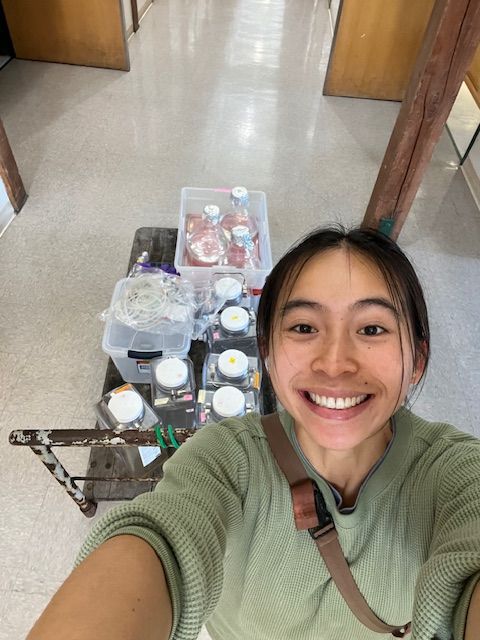"Temperature effects on growth, community composition, and domoic acid production in Pseudo-nitzschia spp."
A Thesis Defense by Hannah McGrath
MLML Biological Oceanography & MLML Environmental Biotechnology
Live-Stream July 25th, 2025 at 10:00 am PST

Abstract
Monterey Bay, CA is a highly productive system that is threatened by warming sea surface temperatures (SSTs) and the bloom forming genus Pseudo-nitzschia (Pn) that can produce the neurotoxin domoic acid (DA). Since half of Pn species produce DA, species-level identification is critical for predicting DA events. I determined whether temperature (12 °C, 15 °C, 20 °C, 25 °C) impacts P. pungens, P. multiseries, and P. australis growth, toxicity, and community composition in batch cultures measuring biomass, growth rate, cell physiology, and toxin production. In Part A, Pn strains were cultured individually at different temperatures to establish baseline growth curves to develop a predictive model for Pn species biomass. In Part B, a mixed community of Pn was grown at current Monterey Bay temperatures (15 °C). Increased temperatures led to increased growth rates, biomass, and toxin production. P. multiseries had a wider thermal range than P. pungens. When initial biomass was equal, P. pungens and P. multiseries were predicted to reach maximum growth rates at 20.7 °C and 24.2 °C respectively. In a mixed community (15 °C), P. multiseries outcompeted P. australis and P. pungens based on cell concentration (cells μL-1). The observed species-specific thermal traits suggest that warming oceans may favor the dominance of toxic P. multiseries, thereby increasing the risk of DA events disrupting the marine ecosystem. This research furthers our understanding that temperature plays for forecasting species-specific toxic Pn blooms and mitigating their effects on marine life and coastal communities.
Bio
Hannah grew up in New York City for the majority of childhood. She earned her B.A. in Environmental Science, along with a minor in Managerial Economics, from Colby College in Maine. During her time as an undergrad, she had the opportunity to study at Bigelow Laboratory for Ocean Sciences where she got her first taste of fieldwork and sparked a lasting love for marine science. That spark quickly grew. The following summer, Hannah joined the Red Tide Institute at Mote Marine Laboratory as a Research Experiences for Undergraduates intern. There, she dove deeper into the world of harmful algal blooms, gaining hands-on experience both in the lab and out in the field.
In the fall of 2022, Hannah made the move to California to pursue her Master’s in Marine Science at Moss Landing Marine Laboratories, where she is co-advised by Dr. Holly Bowers and Dr. Sarah Smith. Since arriving on the West Coast, she’s taken on the role of Phytoplankton & Water Quality Specialist with the CALHABMAP (Harmful Algal Bloom Monitoring and Alert Program). Her work involves monitoring water quality and phytoplankton populations in Monterey Bay. Looking back, Hannah feels incredibly grateful for the journey, especially the mentors, family, and friends who have supported her along the way.



